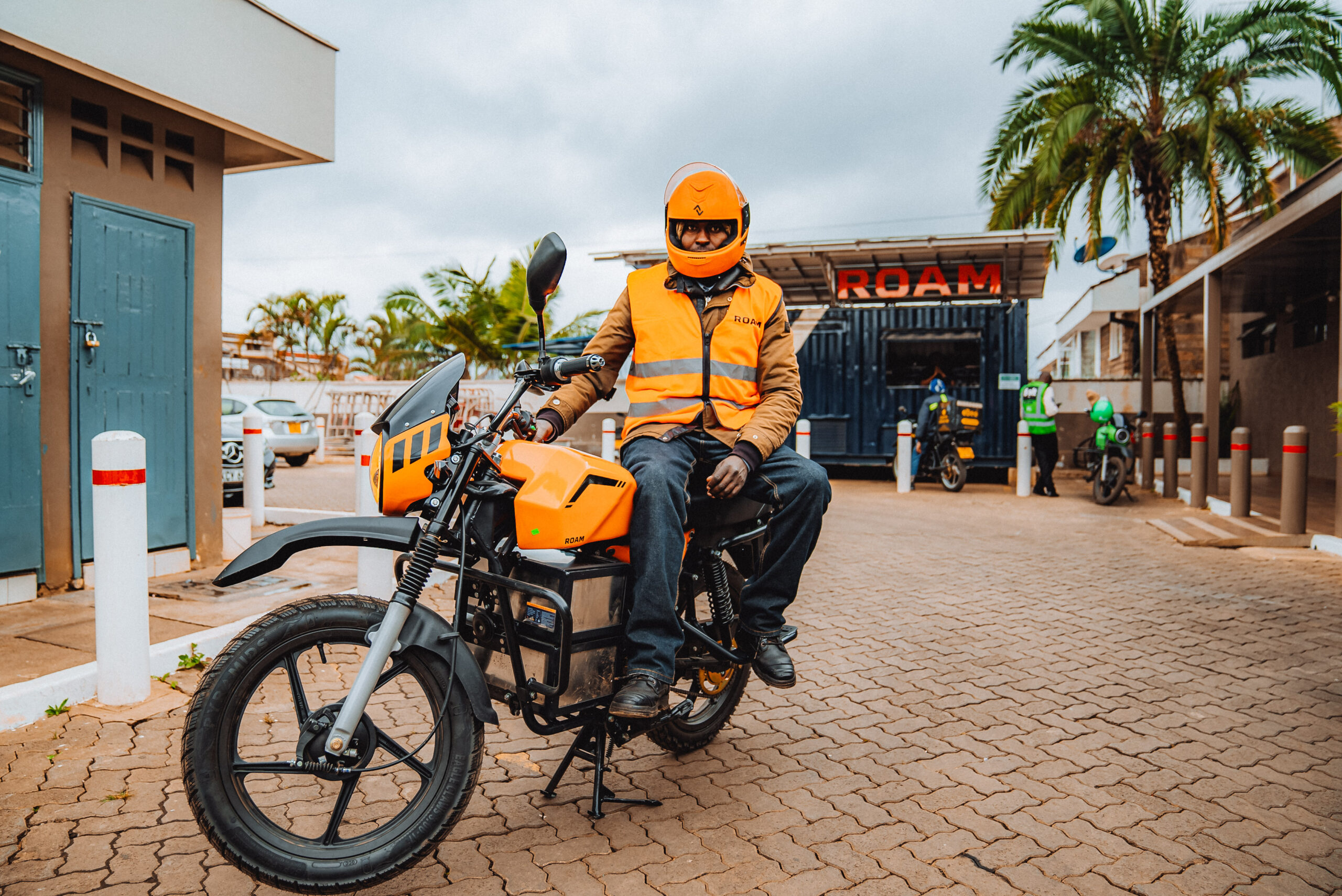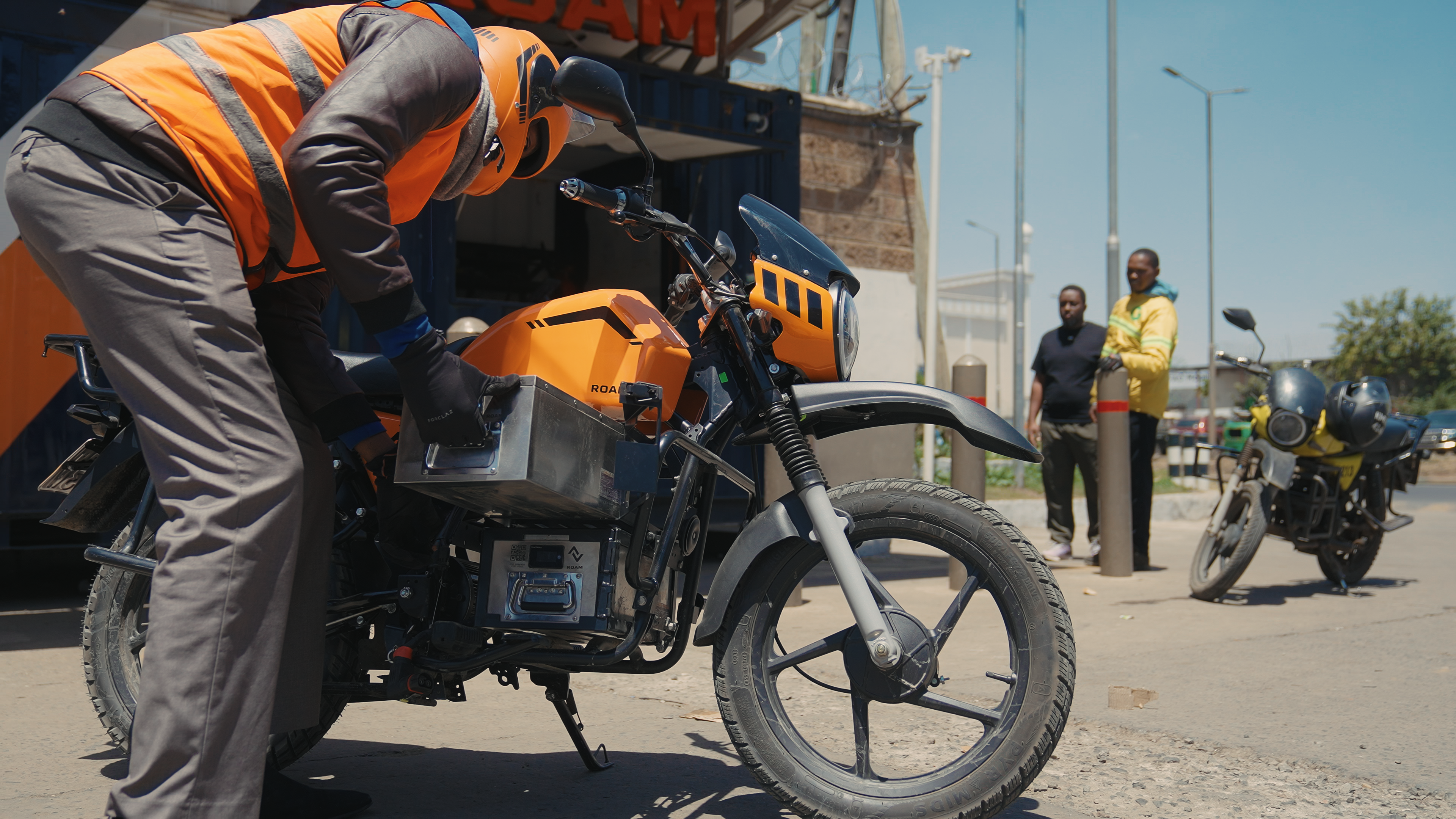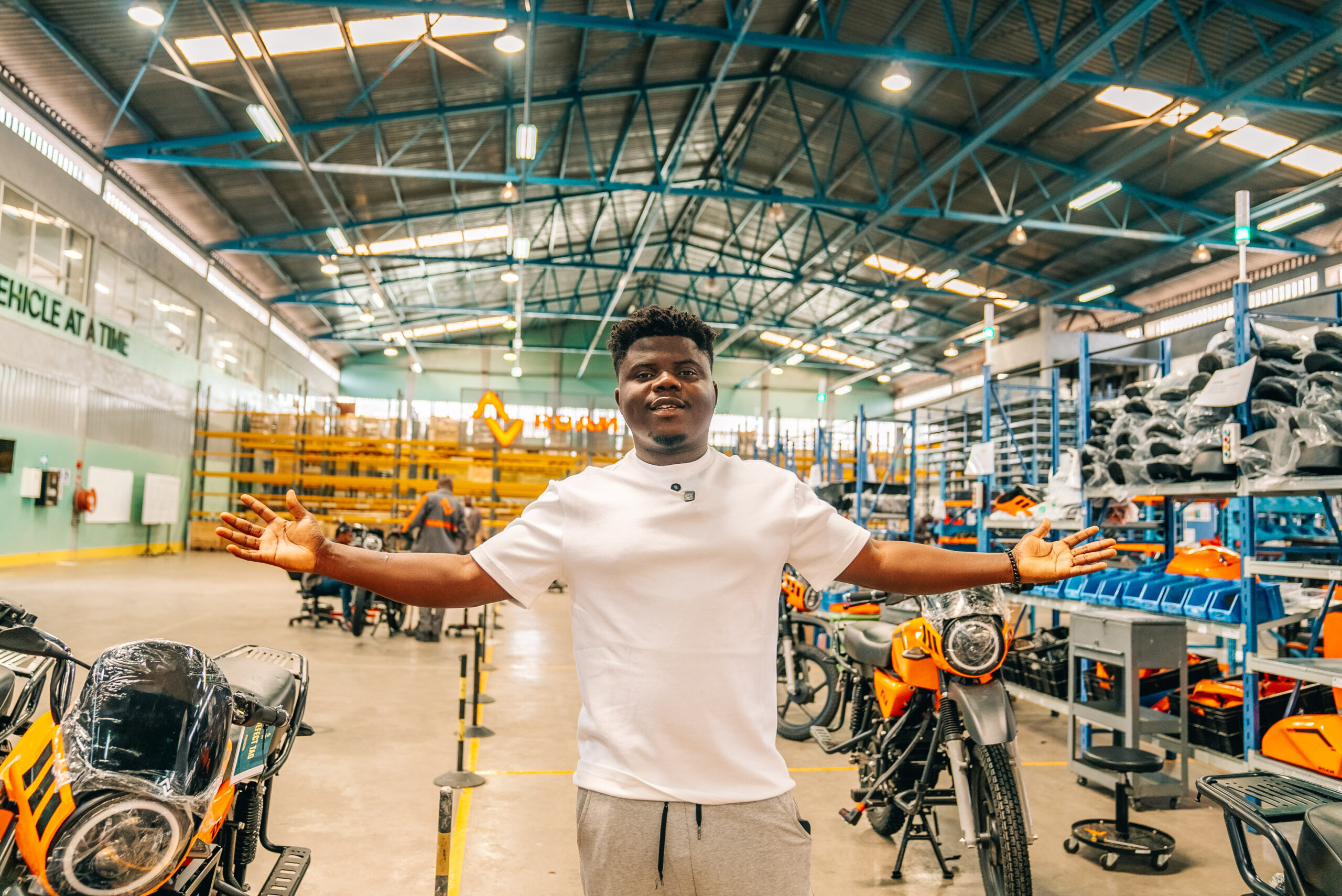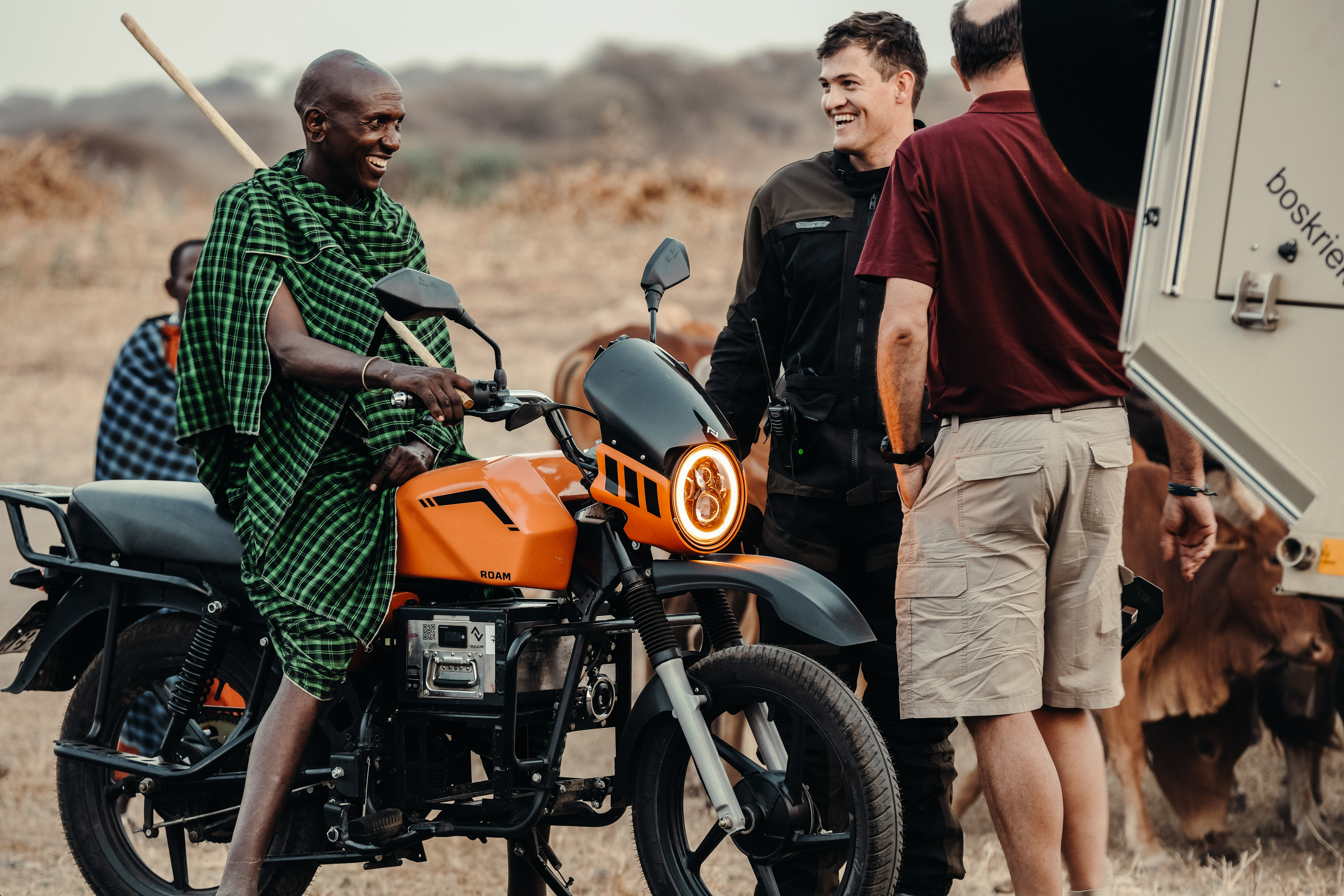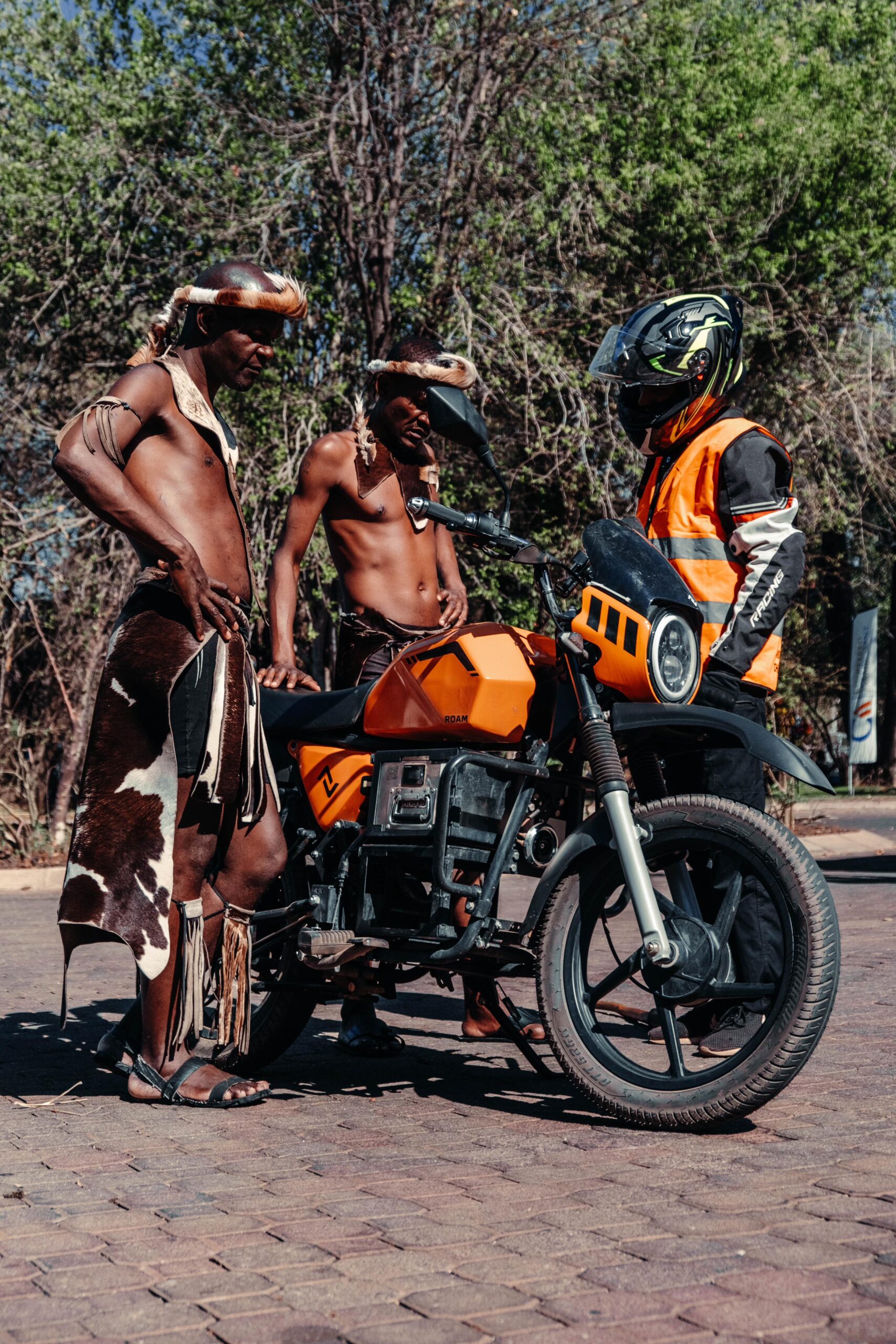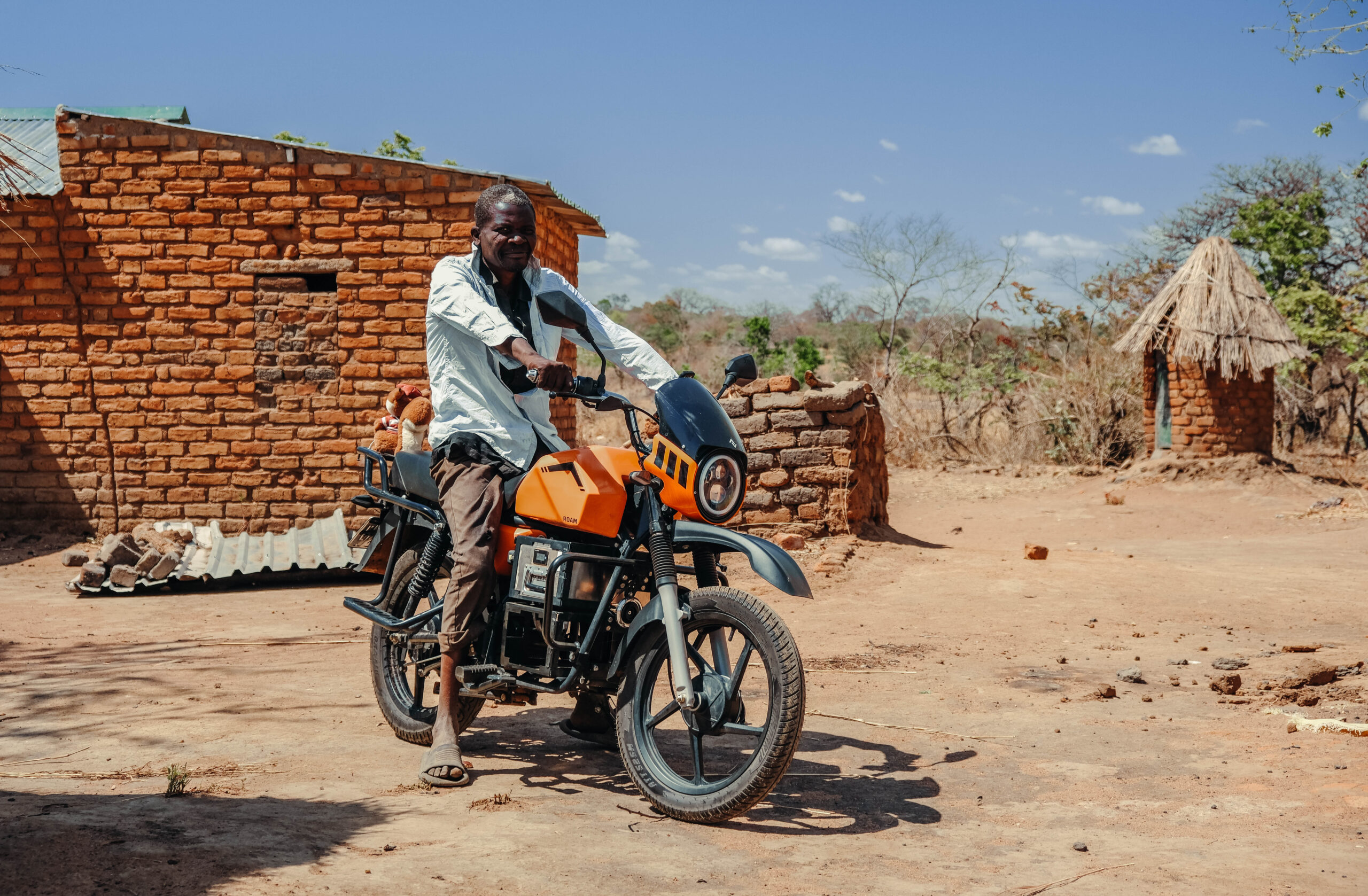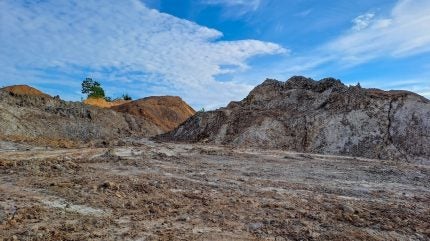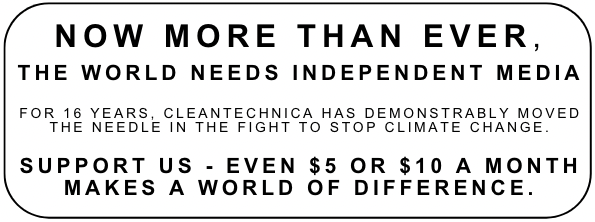
Sign up for daily news updates from CleanTechnica on email. Or follow us on Google News!
Accelerating the transition to electric motorcycles in Kenya could unlock efficiencies across the energy system, cut down fossil fuel imports, and provide additional revenues for Kenya’s utility company.
I have been covering developments in Kenya’s electric vehicle segment for over 7 years now. A lot has happened in that time. What excites me the most is the fact that we don’t just talk about the prospects and the incredible opportunity and potential for this sector, but we are seeing tangible progress on the ground. Every day now when you travel around Nairobi, you can feel the movement and see the tremendous progress made in that time. Almost everywhere you go now in Nairobi, you will see electric motorcycles out and about.
This sector has seen the most interest from startups as well as from investors due to the large total addressable market. Roam’s Hans van Toor recently commented on this large addressable market and how electrification of Kenya’s motorcycle sector could unlock significant value across several sectors of the economy. Hans noted that there are currently about 2,188,500 motorcycles in Kenya (99% internal combustion engine). Accelerating the transition to electric motorcycles could unlock efficiencies across the energy system, cut down fossil fuel imports, and provide additional revenues for Kenya’s utility company.
Hans added that since Kenya’s electricity grid is mostly powered by renewables (about 90%), taking advantage of the large drop in demand for electricity overnight (installed capacity of over 3,350 MW, peak demand of 2,228 MW, with baseload demand dropping to about 900 MW at night) could reduce the dependency of imported fossil fuels while creating demand for some of the overnight electricity generation capacity that is usually curtailed, which is such a waste of all that renewable energy capacity.
Hans adds that with reports that Kenya imports $500 million worth of fuel every month, and with the utility company also reported to have legacy debt of over $1 billion, this could be a win-win situation for stakeholders in the electricity sector. This could also provide some much needed relief on the country’s ballooning fuel import bill. Hans adds that to travel 120km, an electric motorcycle uses 4.5kWh ($0.41 under the overnight e-mobility tariff – using $0.09/kWh), whereas it take over 3.5 liters of petrol at a cost closer to $5.60 for an ICE motorcycle. The savings enjoyed by riders switching to electric are clear to see. Assuming the 2.18 million motorcycles all switch to electric, the utility company’s potential revenue from charging these motorcycles each night would be about $868,585 ($0.41 x 2,188,500). All of this would be additional revenue from overnight capacity that is currently being curtailed due to low overnight demand for electricity. Of course, not all will be switching to electric in the medium term, and more studies would be needed to look into the local grid to accommodate all this, but this is a quick way to show the potential of such an ecosystem.
In order to encourage operators in Kenya’s motorcycle sector to make the switch to electric, a widespread battery charging and swapping network is essential. This is why Roam, in collaboration with several partners, is working hard to expand its battery charging network. Roam is set to establish 10 additional solar-powered Roam Hubs in Nairobi with funding from ENERGICA, a European Union-supported initiative under Horizon 2020. The project aims to accelerate the adoption of clean, resilient transportation solutions by offering affordable battery rentals, optimized charging, and quick after-sales services for electric motorcycle riders in Nairobi, with each Roam Hub making 400 to 500 transactions daily for both charging and renting batteries.
Roam is one of three demonstration sites selected in Africa by ENERGICA to develop locally adapted, innovative technologies. While Roam focuses on expanding clean transport in Kenya, other sites include Madagascar, where ENERGICA is developing nano-grids for renewable water and food production, and Freetown, Sierra Leone, where biogas and water purification systems are advancing energy, water, and fertilizer production.
Having already established five Roam Hubs across Nairobi — at Lusaka Road, Waiyaki Way, Kayole Spine Road, Roysambu, and Forest Road — Roam is poised to expand its network further. The new hubs will make electric mobility more accessible and transform urban transportation into a cleaner, more efficient system. The ENERGICA project aligns seamlessly with Roam’s mission to provide innovative, low-emission transport solutions. Solar charging further enhances affordability, offering an additional savings per kWh compared to electricity from the grid.
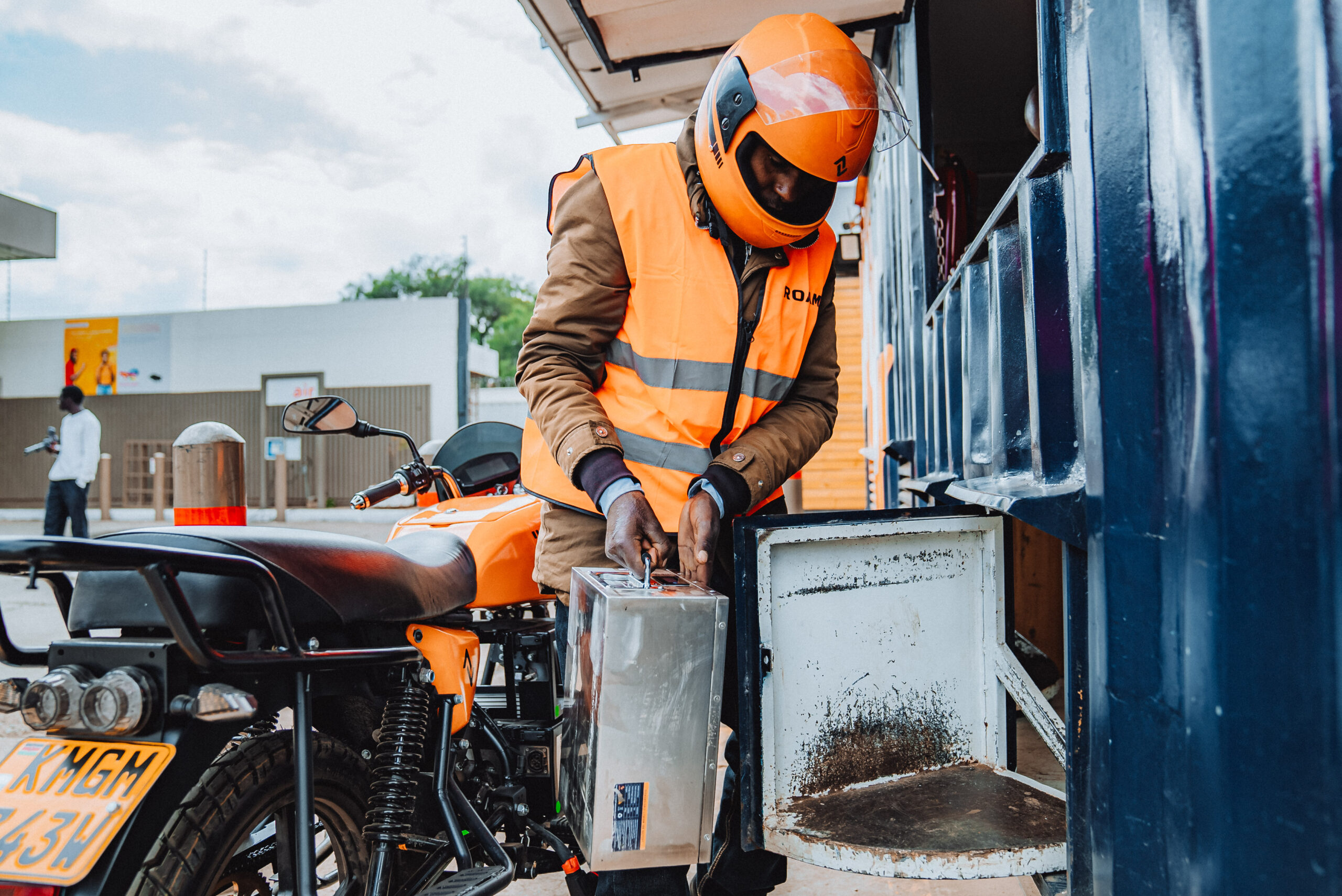
By expanding Roam Hubs in urban and peri-urban areas, Roam says the aim is to create a reliable, convenient network for electric motorcycle riders. Additionally, Roam’s commitment to an open architecture design for its charging stations will enable interoperability between electric vehicle manufacturers, allowing riders to charge at various locations, thus removing a key barrier to widespread transition.
Habib Lukaya, Roam’s Product Manager of Energy and Charging, remarked: “This initiative is a game-changer for electric mobility in Kenya and across Africa. The open architecture design we’re implementing not only enables seamless interoperability but also fosters sustainable growth for electric motorcycles. By allowing users to charge their electric motorcycles at various speeds and locations, we are addressing one of the most significant barriers to electric vehicle adoption —access to reliable and flexible charging infrastructure.”
Nadia Moussaid, ENERGICA’s Collaborative Project Manager, shared: “This partnership is a critical link between Africa and Europe, tackling urgent challenges such as energy access, climate change, and clean transport. Roam’s solar-powered electric mobility solutions will reduce carbon emissions, improve air quality, and transform urban transport in cities like Nairobi and Kisumu. Together, we’re building resilient, low-emission transport networks that empower communities and create sustainable jobs.”
Getting The Message Out There
The other critical piece to get consumers to switch to electric is to get the message out there. Raising awareness around electric vehicles through using key messages to relevant target groups can help move the customer base from just early adopters and get closer to mainstream adoption. Roam is also collaborating with key constituencies, redefining the road to sustainability messaging riding on the new wave of African influencers that are sparking a sustainable movement.
As the continent accelerates its shift to electric mobility, content creators like Wode Maya are taking the driver’s seat, inspiring millions to embrace a cleaner, brighter future. Wode Maya is a celebrated African storyteller and a YouTuber with a massive global following of over 1.6 million. Wode Maya recently visited Roam headquarters, Roam Park, the biggest electric mobility plant in East Africa based in Nairobi, where he experienced the Roam Air, Roam’s electric motorcycle. During his visit, Wode spent time with Roam engineers, including Lumbi Muchui, the Technical Product Manager, and Vivian Ngeno, the EM Product Team Leader, who took him through the whole process of production of Roam Air right from the skeleton to the final product, proving that the motorcycle is not only made in Kenya but also made by Kenyan engineers.
Roam Air aims to redefine the boda boda industry by eliminating the high maintenance costs associated with internal combustion engine (ICE) motorcycles. Its service-free design, combined with a portable and affordable dual-battery system, delivers a 160 km range per charge — offering a comparatively cost-effective solution powered by a simple electricity supply. Since earlier this year, Wode Maya has showcased his support for Prince William’s Earthshot Prize, where Roam was selected as a finalist, with Wode highlighting and accelerating solutions for the planet’s most pressing environmental challenges, including the rising carbon emissions leading to climate change that Roam is working to reduce. His engagement with the award underscores his commitment to inspiring action for a sustainable future.
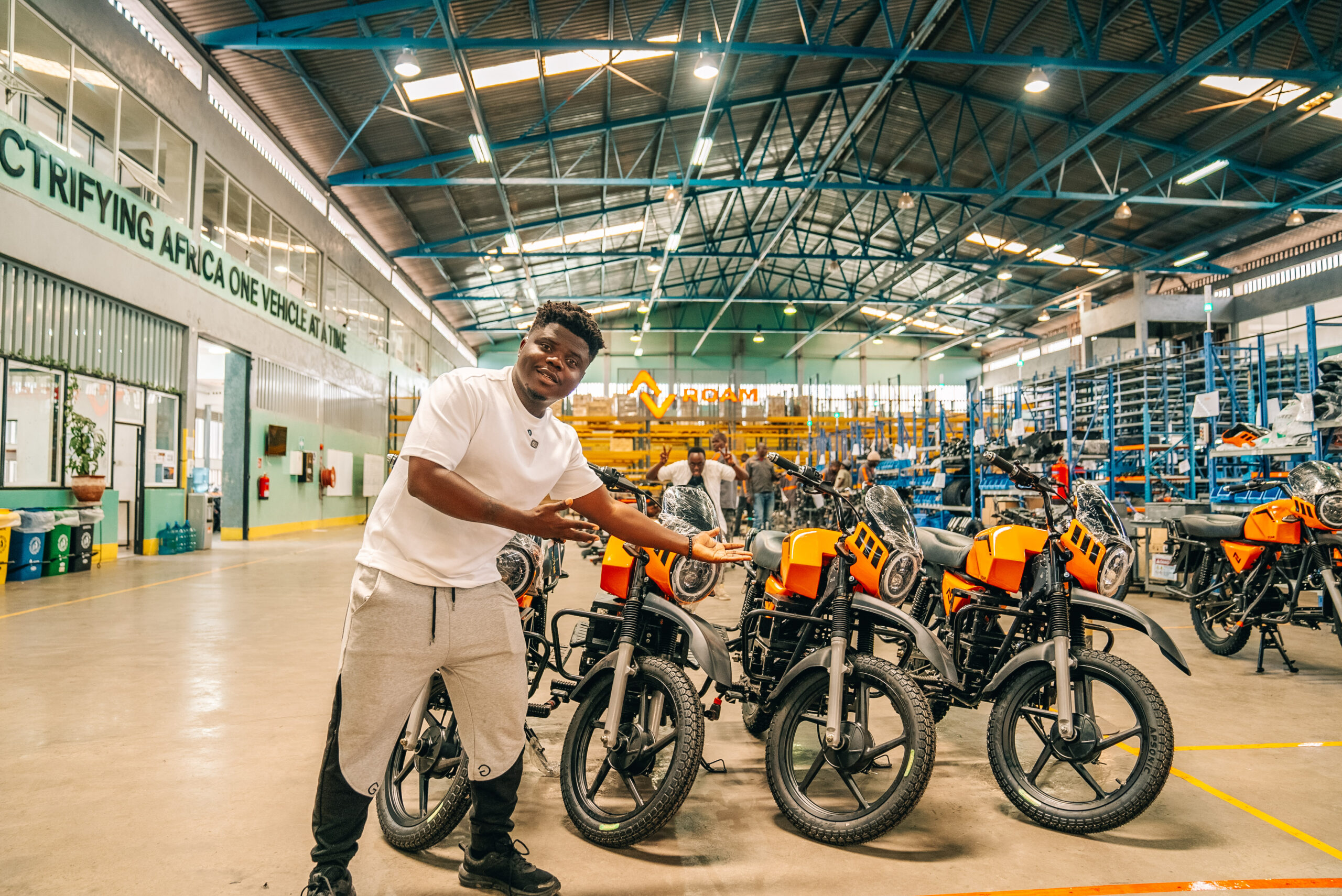
With affordability, zero emissions, and durability tailored for African roads, the Roam Air is a catalyst for economic and environmental transformation. Wode Maya joins a global movement of influencers driving sustainability, including Vanessa Nakate, who advocates for renewable energy and against deforestation in Africa, and Bonang Matheba, who links clean water access to environmental and human rights. It’s great to see these kinds of influencers that have a huge following are getting involved and helping get the word out to more people beyond EV enthusiasts.
Built For Africa
Roam designed the Roam Air from the ground up for everyday applications in African urban and rural areas. Here are the specs of the Roam Air:
- Battery Capacity: 2 x 3.24 kWh
- Range (Dual Battery): 160km
- Nominal Power: 3000 W
- Top Speed: 90 km/h
- Payload: 220 kg
- Weight (Single Battery): 135 kg
- Charging time: 4 h
Features:
- Removable dual battery solution
- Driving modes: Eco, Standard, Power, Sports, Reverse
- Increased carrying capacity on subframe
- State-of-the-art software and onboard telemetry
- Storage compartment in tank
- Improved screen user interface with better visibility
- USB charging port
To showcase the Roam Air’s robustness for applications on across various settings on the African continent, the Roam Air recently completed a historic 6,000-kilometer solar-powered journey from Nairobi, Kenya, to Stellenbosch, South Africa. The expedition was a testament to African ingenuity and sustainable innovation, aimed at showcasing Kenya’s leadership in the future of clean mobility. This was a collaborative effort between Roam and Stellenbosch University’s (SU) Faculty of Engineering, with crucial support from partners like SANEDI, Scatec, Charlie’s Travel, and Throttle Pitstop. The expedition, which began on 29 September 2024, saw Roam Air travel through Tanzania, Malawi, Zambia, and Botswana, before arriving in Stellenbosch on the morning of 16 October. Two Roam Airs have been donated to the Electric Mobility Lab at SU to support ongoing research into sustainable transport solutions tailored for Africa.

Accompanied by two support vehicles, the trip coincided with South Africa’s Transport Month and tested Roam Air’s drivetrain, portable dual batteries, and solar recharging capabilities under real-world conditions. Throughout the journey, the motorcycle’s batteries were charged with solar energy, proving that clean energy can be a reliable solution for long-distance travel in Africa. On the final day, the Roam Air covered 1,000 km in under 18 hours as it travelled from Kimberley to Cape Agulhas, Africa’s southernmost point.
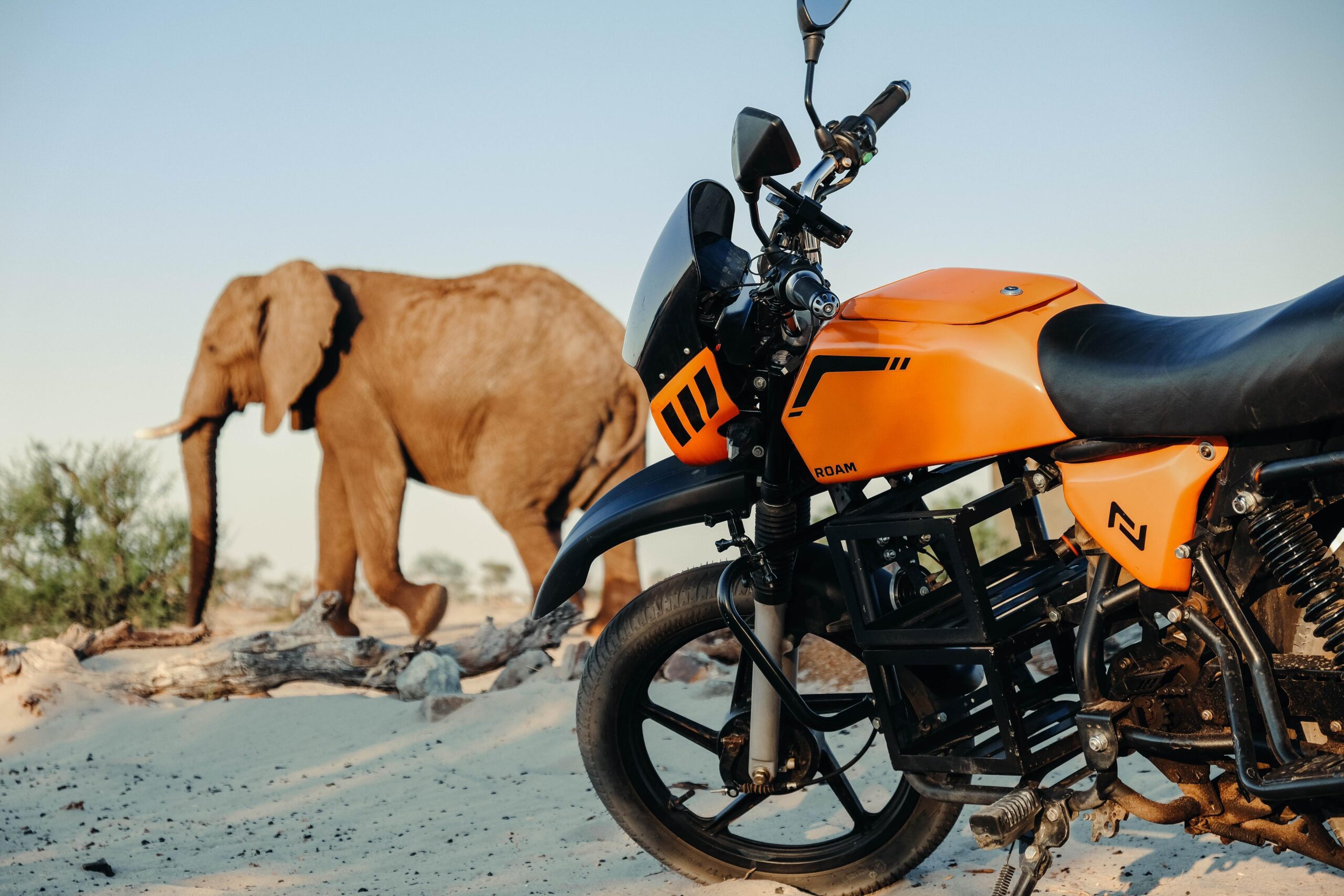
“This ambitious journey represents a major leap in showcasing the potential of sustainable electric mobility across sub-Saharan Africa,” said Thinus Booysen, Professor of Engineering and founder of the Electric Mobility Lab at Stellenbosch University. “Despite challenges like adverse weather and technical hurdles, the resilience of our team and the Roam Air motorcycle highlighted the power of innovation and collaboration.”
The journey was a significant test of a new portable charging system, achieving a new record of 113 km on a single battery charge. The trip also revealed Africa’s unique beauty, from the awe-inspiring Victoria Falls to the stunning Chobe River, where the team camped among hippos and marveled at the continent’s natural wonders.
Masa Kituyi, Roam’s Product Owner, who joined the expedition as a rider alongside Stephan Lacock, shared,“Completing this journey is a historic milestone for Roam Air, proving that African innovation can thrive. The warm welcomes from local communities showed us how excited people are about electric mobility built right here in Africa.”
The motorcycle’s arrival coincided with Stellenbosch University’s Electric Mobility Day on 18 October, where the lab was officially launched. The event also featured the handover of a retrofitted 65-seater electric bus to Golden Arrow Bus Service and a presentation of Roam Air to the lab. Government officials, industry leaders, and researchers gathered to celebrate advancements in electric mobility and explore demonstrations of EVs and charging infrastructure.
Roam and partners said that this ground-breaking journey has proven that clean energy solutions can power more than just vehicles. Roam says that the Roam Air’s solar-powered journey stands as a powerful symbol of the continent’s potential to lead in sustainable transport, one vehicle at a time.
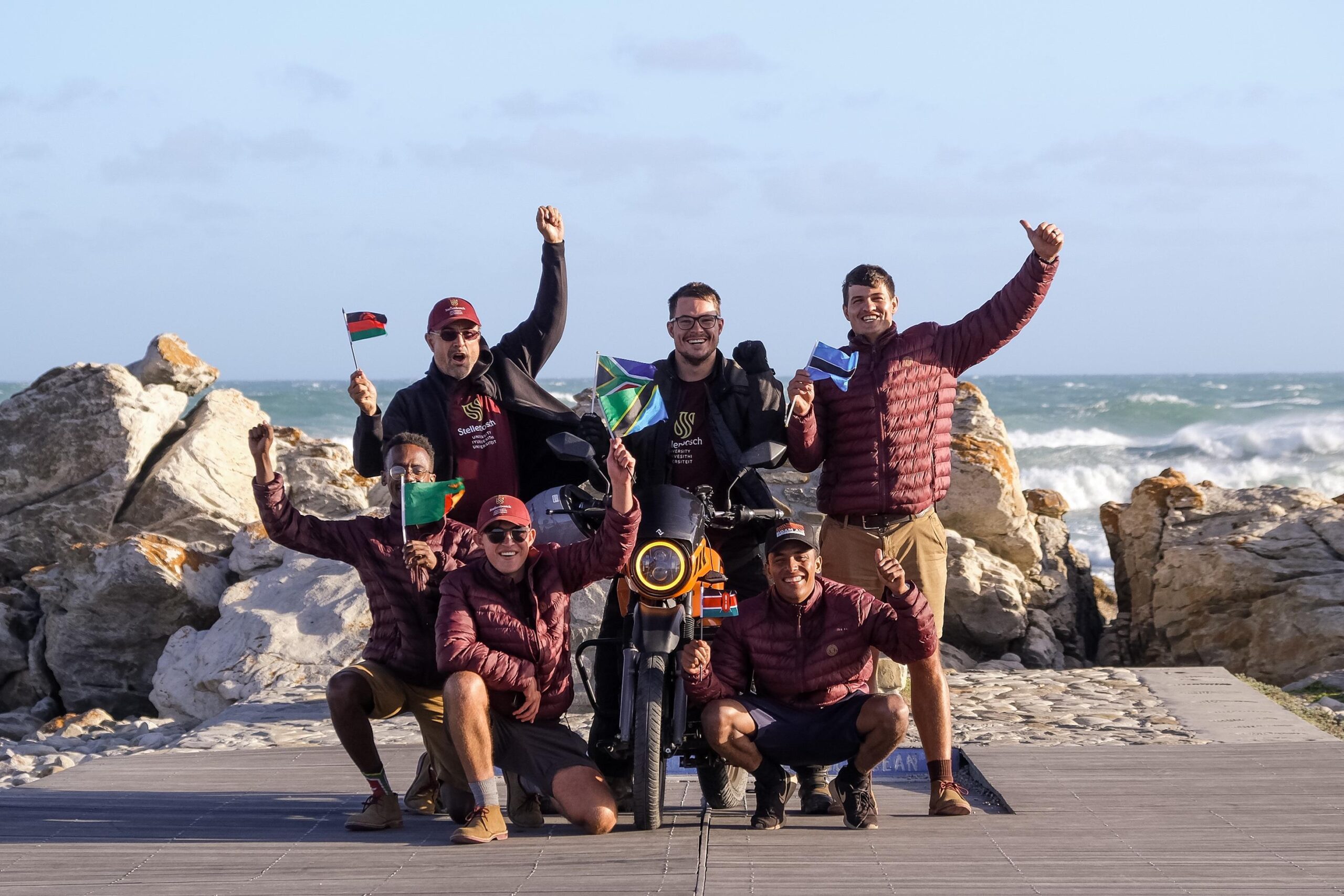

Chip in a few dollars a month to help support independent cleantech coverage that helps to accelerate the cleantech revolution!
Have a tip for CleanTechnica? Want to advertise? Want to suggest a guest for our CleanTech Talk podcast? Contact us here.
Sign up for our daily newsletter for 15 new cleantech stories a day. Or sign up for our weekly one if daily is too frequent.
CleanTechnica uses affiliate links. See our policy here.
CleanTechnica’s Comment Policy

